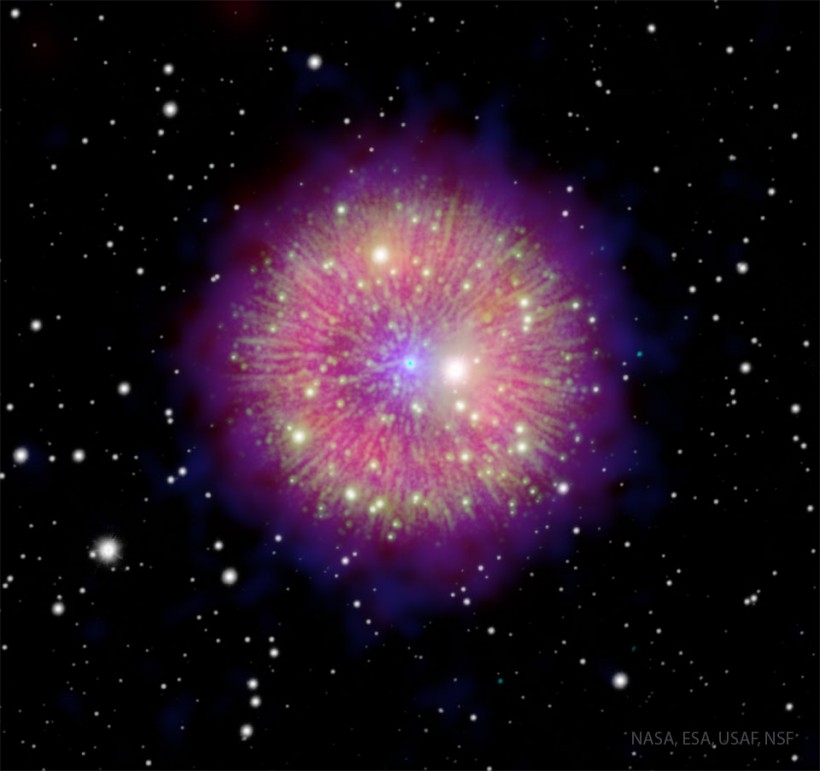A striking cosmic phenomenon has been revealed through NASA's Picture of the Day, showcasing an unusual nebula named Pa 30. This celestial spectacle, captured in exquisite detail, presents a fascinating enigma to astronomers and space enthusiasts alike.

(Photo : NASA, ESA, USAF, NSF;)
"Guest Star"
Pa 30 aligns with the coordinates where a luminous "guest star" was documented in 1181. Its intricate filaments bear resemblance to those observed in novae and planetary nebulae.
However, scientists are now considering a novel explanation: Pa 30 might have originated from a rare type of supernova known as a thermonuclear Type Iax, earning it the alternate designation SN 1181, according to NASA.
In this speculative scenario, the supernova event was not triggered by the explosive demise of a single star but rather by the merging of two white dwarf stars.
This cosmic merger unleashed a powerful blast, leading to the formation of Pa 30. At the core of this cosmic marvel lies a hypothesized "zombie star" - a remnant white dwarf that somehow endured the cataclysmic explosion.
The image of Pa 30 is a composite of data collected from various telescopes, including those operating in the infrared, visible, and X-ray spectra. These combined observations provide a glimpse into the intricate structures and dynamics of this mysterious nebula, offering astronomers valuable insights into its origins and evolution.
Pa 30 was initially discovered in 2013 by American amateur astronomer Dana Patchick during a search for planetary nebulae using WISE infrared data. Its appearance as a nearly-round nebula, accompanied by an intensely blue central star, intrigued researchers.
The nebula's shell emits bright infrared radiation but appears faint in the optical spectrum, initially detected only through emissions in the [O III] band.
Subsequent studies of Pa 30 have uncovered intriguing details about its composition and characteristics. Optical spectroscopy of the central star conducted in 2019 revealed a very hot star with a vigorous stellar wind expanding at an exceptionally high velocity of 16,000 km/s. This stellar wind primarily consists of carbon, oxygen, and neon, lacking hydrogen or helium.
Read Also: NASA's Picture of the Day Features SpaceX Falcon Heavy Rocket Crossing in Front of Nearly Full Moon
Deep Cosmic Dream in the Coma Cluster
In related news, NASA's Picture of the Day transports viewers into the deep cosmic dream with an image of the Coma Cluster of Galaxies. This image was captured by astrophotographer Joe Hua, unveiling the density of this galactic ensemble, which includes thousands of galaxies.
Each galaxy within the Coma Cluster is a cosmic city housing billions of stars, reflecting the grandeur of our own Milky Way Galaxy.
However, despite its relative proximity in contrast to other clusters, the light from the Coma Cluster travels vast cosmic distances, taking hundreds of millions of years to reach our observation point.
Most galaxies in the Coma Cluster, along with other comparable clusters, exhibit an elliptical form, which contrasts with the abundance of spiral galaxies found beyond these densely packed regions, according to NASA.
Read more about this story here.
Related Article: NASA's Picture of the Day Features a Stunning Portrait of the Cosmic Bird 'Seagull Nebula'










